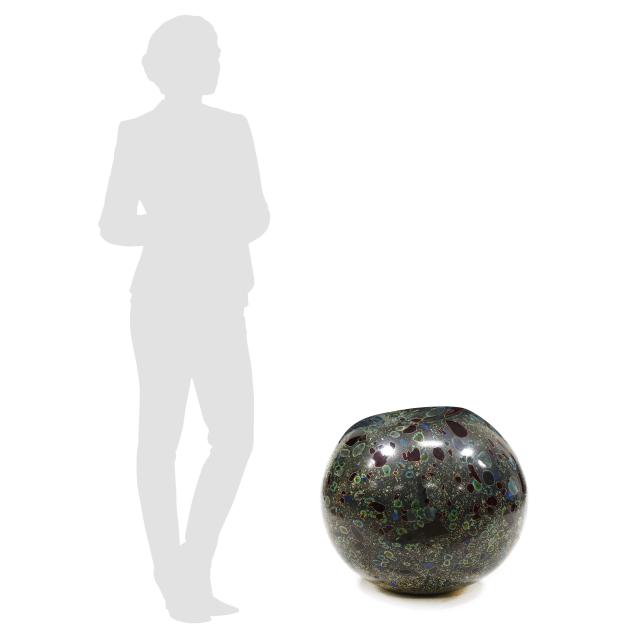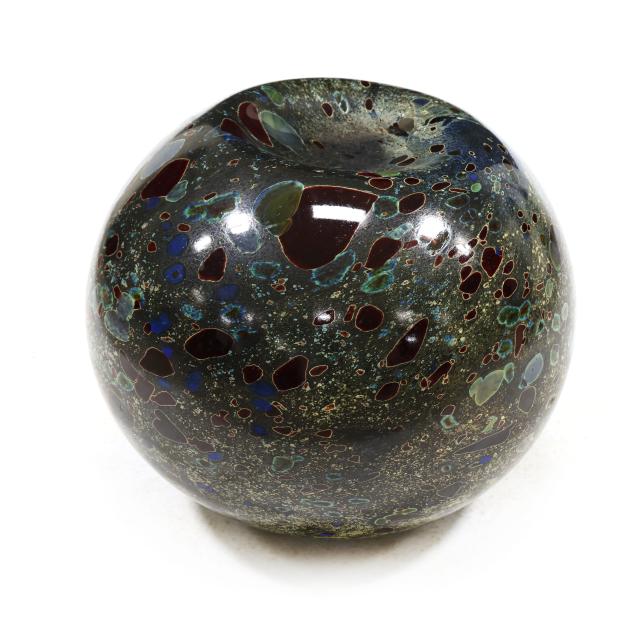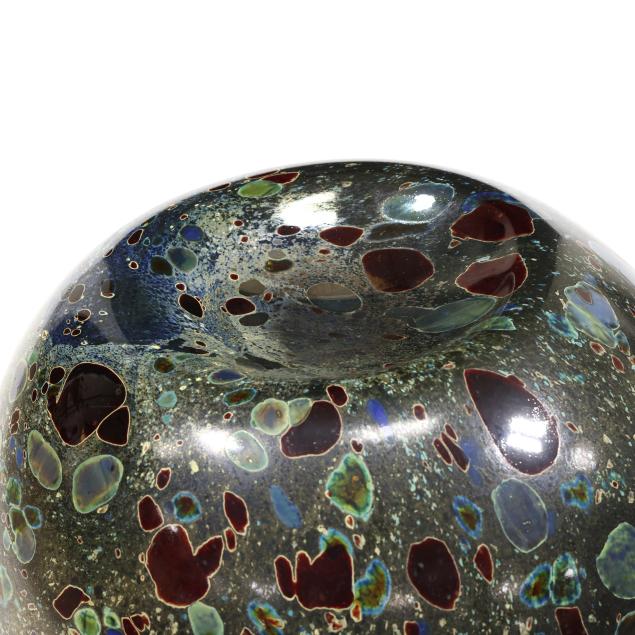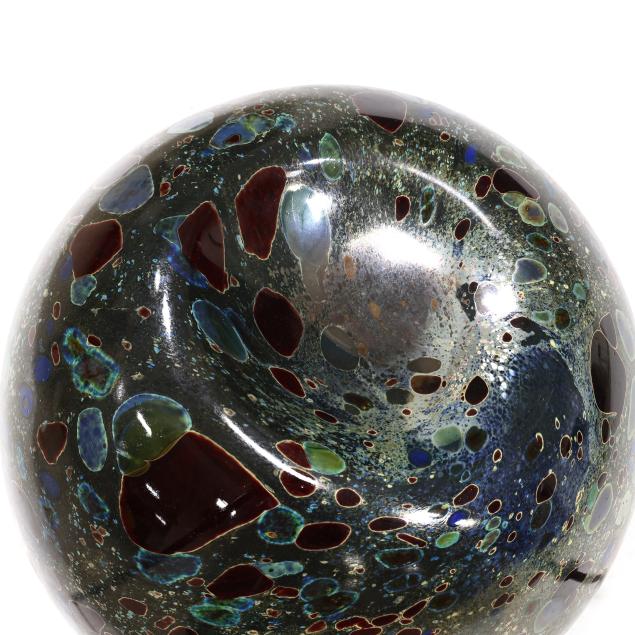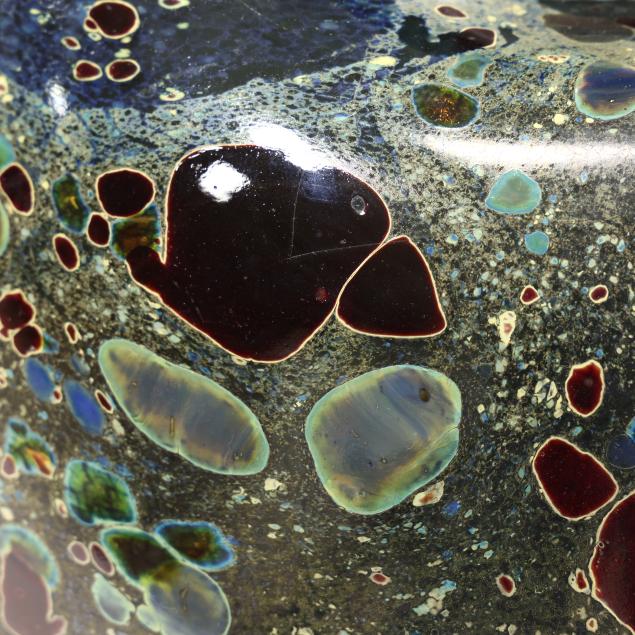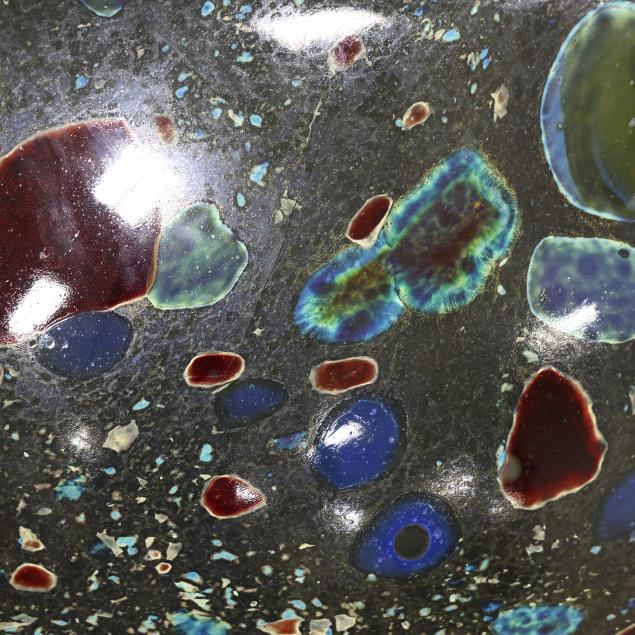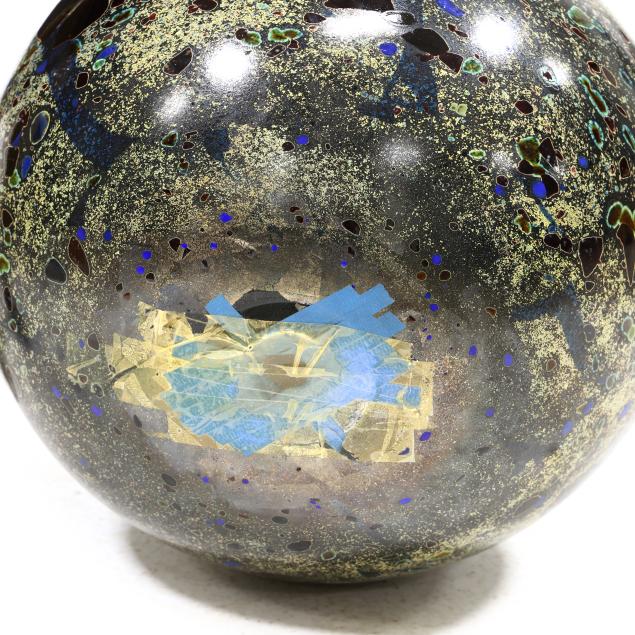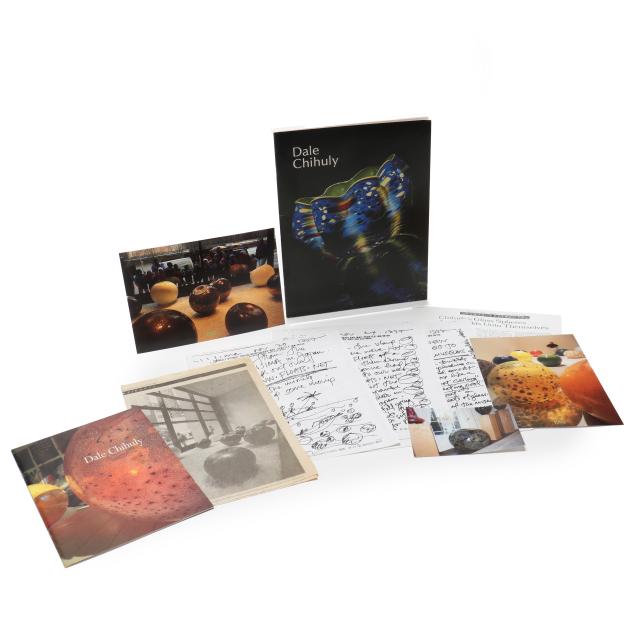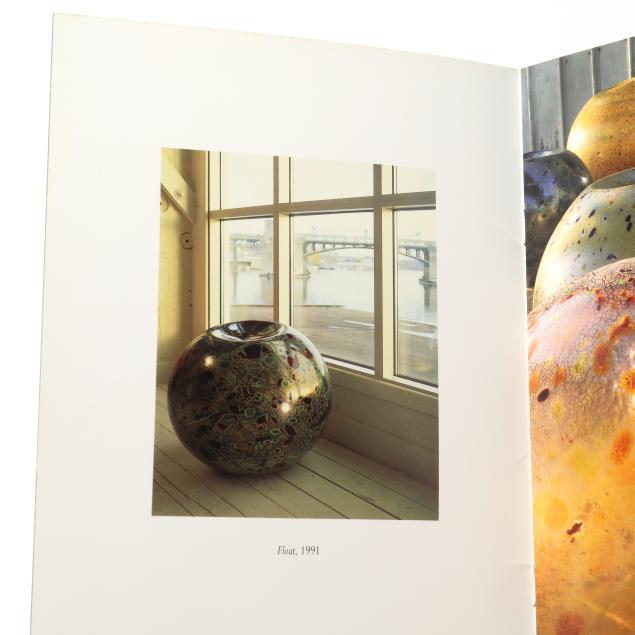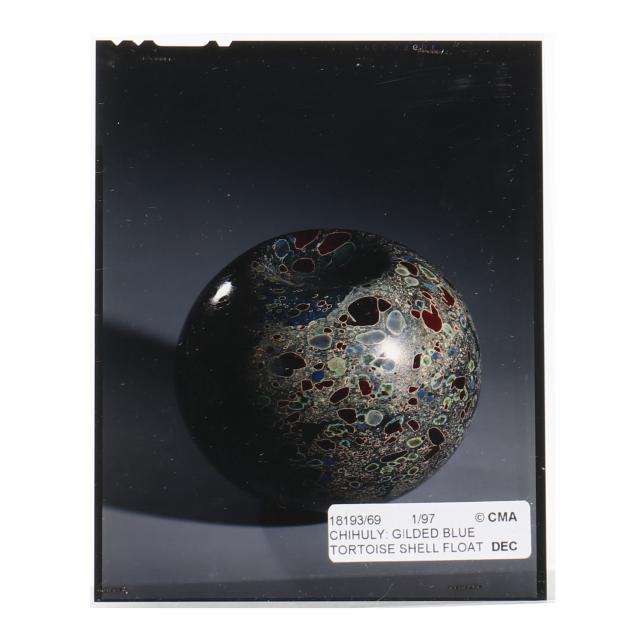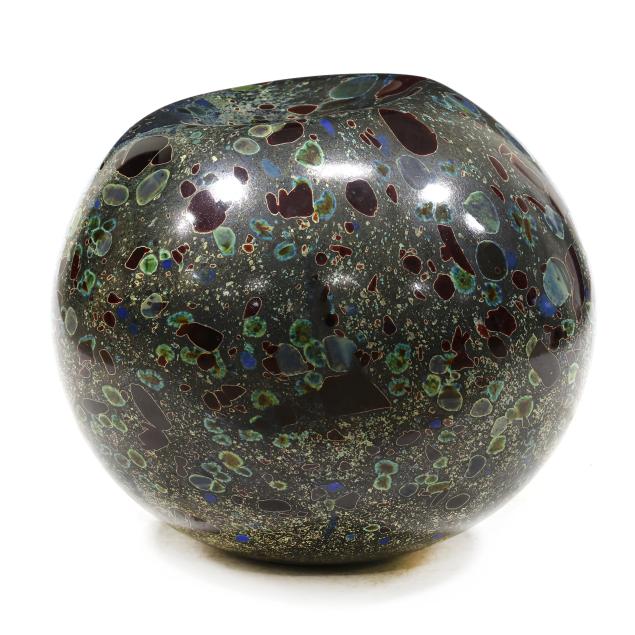
Lot 2112
Dale Chihuly (American, b. 1941), Niijima Tortoise Shell Float
Explore more items like this one.
Visit our Modern Art & Design Department Modern Art & Design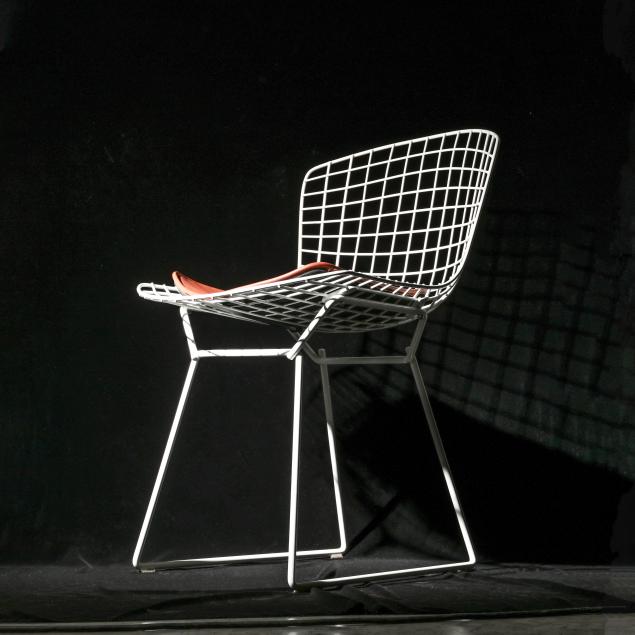
Lot Details & Additional Photographs
21 x 24 in. diameter
The Contemporary Art Collection of Francine & Benson Pilloff, Chapel Hill, North Carolina
Exhibited:
GLASS TODAY, Cleveland Museum of Art, 1997, p. 47
Fusion: Contemporary Art Glass from North Carolina Collections, North Carolina Museum of Art, 2005 (accompanied with a photo copy from the exhibition)
Accompanied by four copies of letters, a drawing, a booklet showing this float on the cover page, a 4 x 6 photograph of the float on display, two exhibition cards, a cut out article from the New York Times, Sunday, July 5, 1992, and a Habatat Galleries exhibition booklet, 1992 - showing a display of similar floats.
The first letter reading "Niijima Nov 20 1997, Greetings from the sand of Niijima in Japan. Logon & check out our website www.floats.net for an up to the minute photo update of some moving panoramas. Love, Chihuly"
The second reading: "Niijima Nov. 24. 1997, Francine & Benson, Greetings from the island of Niijima where we've just finished blowing floats of a weeks of installing them around the island - hope you've had a chance to log onto our web-site - www.floats.net. I'm off today to visit the last remaining Japanese float glass blower in the north of Japan. He's 73 & still going. Tune into the web site for photos. Love, Chihuly"
The third reading: "Niijima Nov 24 1997, SOME IDEAS FOR A NEW FLOAT EXHIBITION TO GO TO SCIENCE & MARITIME MUSEUMS, The show could be slanted towards younger people or adults depending on the venue. The show would consist of several large installations like a "Float Chandelier" a "Float Ceiling", "Floats floating in a reflecting pool", "Floats piled up inside a Boat" a "Wall of Floats" between sheets of glass. Another installation outside of the museum or somewhere near (like "Floats hanging from a Bridge". We could have a movie for videos of lots of visuals about...(text cut off)" the side reading "young people could build their own float chandelier - plastic"
Arguably the most famous glass artist in the world, Chihuly has become synonymous with fine contemporary glass in the way Charles and Ray Eames iconize mid-century modern design; and he continues to awe audiences with his vast displays of colorful installations to both architecturally engaging interiors and exteriors. Born in Tacoma, Washington, Dale Chihuly was introduced to glass while studying interior design at the University of Washington. After graduating in 1965, Chihuly enrolled in the first glass program in the country, at the University of Wisconsin. He continued his studies at the Rhode Island School of Design (RISD), where he later established the glass program and taught for more than a decade.
In 1968, after receiving a Fulbright Fellowship, he went to work at the Venini glass factory in Venice. There he observed the team approach to blowing glass, which is critical to the way he works today. In 1971, Chihuly cofounded Pilchuck Glass School in Washington State. With this international glass center, Chihuly has led the avant-garde in the development of glass as a fine art.
His work is included in more than 200 museum collections worldwide. He has been the recipient of many awards, including twelve honorary doctorates and two fellowships from the National Endowment for the Arts.
Chihuly has created more than a dozen well-known series of works, among them, Cylinders and Baskets in the 1970s; Seaforms, Macchia, Venetians, and Persians in the 1980s; Niijima Floats and Chandeliers in the 1990s; and Fiori in the 2000s. He is also celebrated for large architectural installations. In 1986, he was honored with a solo exhibition, Dale Chihuly: Objects de Verre, at the Musée des Arts Décoratifs, Palais du Louvre, in Paris. In 1995, he began Chihuly Over Venice, for which he created sculptures at glass factories in Finland, Ireland, and Mexico, then installed them over the canals and piazzas of Venice.
In creating his Float series, Dale Chihuly took design inspiration from the glass orbs used by Japanese fishermen to hold their nets in place.
Floats by Dale Chihuly are in the permanent collections of the Smithsonian American Art Museum and Crystal Bridges Museum of American Art.
Hairline cracks to the circumference of the top rim and some running down towards the waist; underside with adhesive tape at center.
